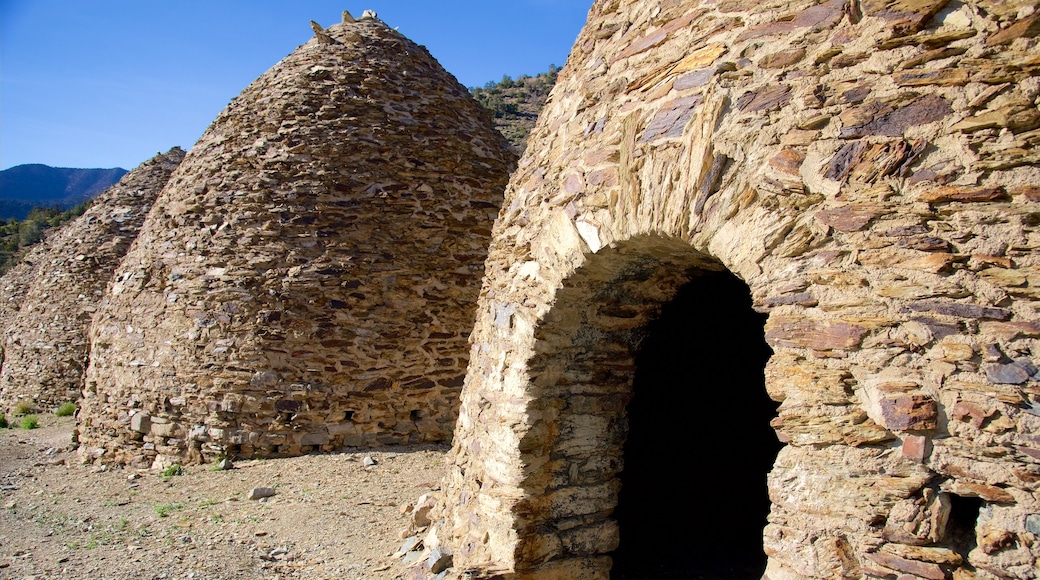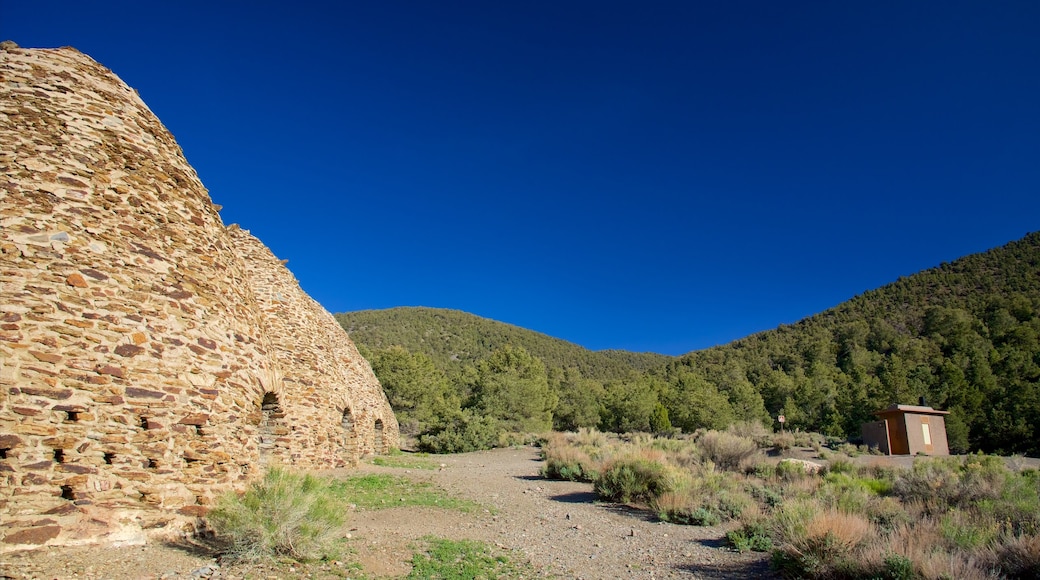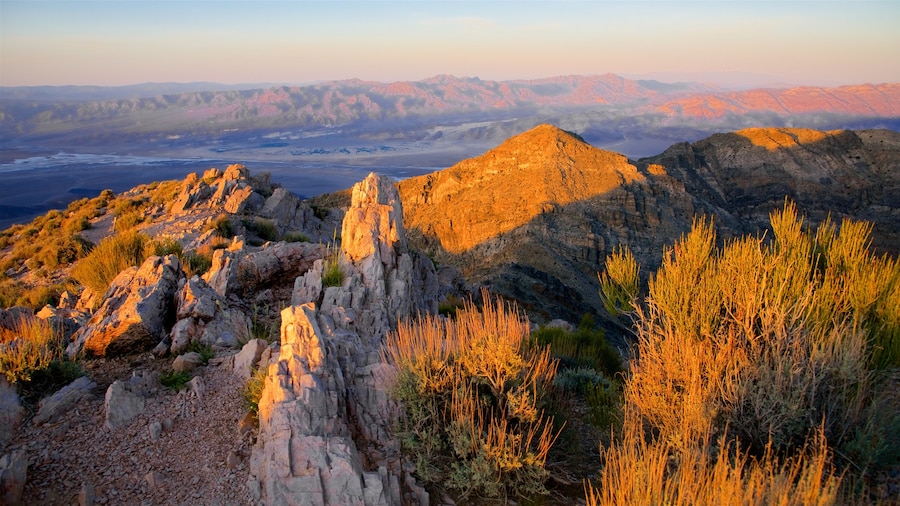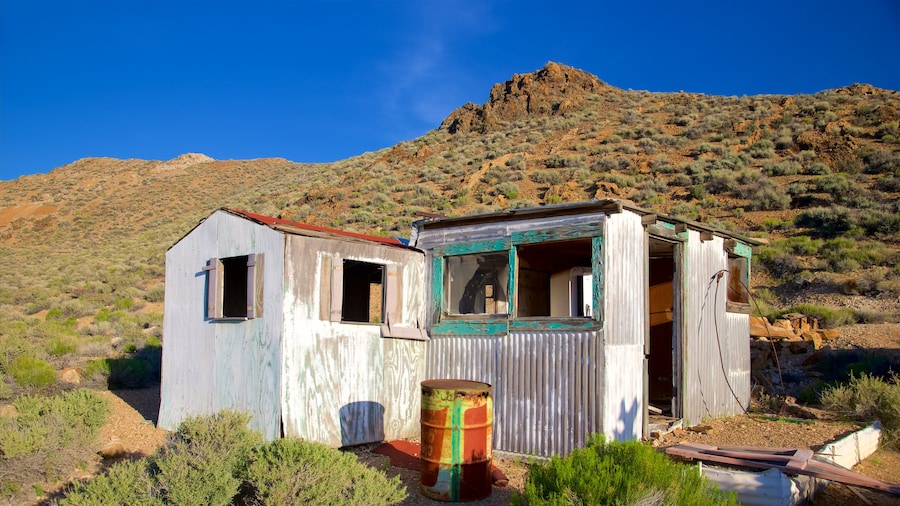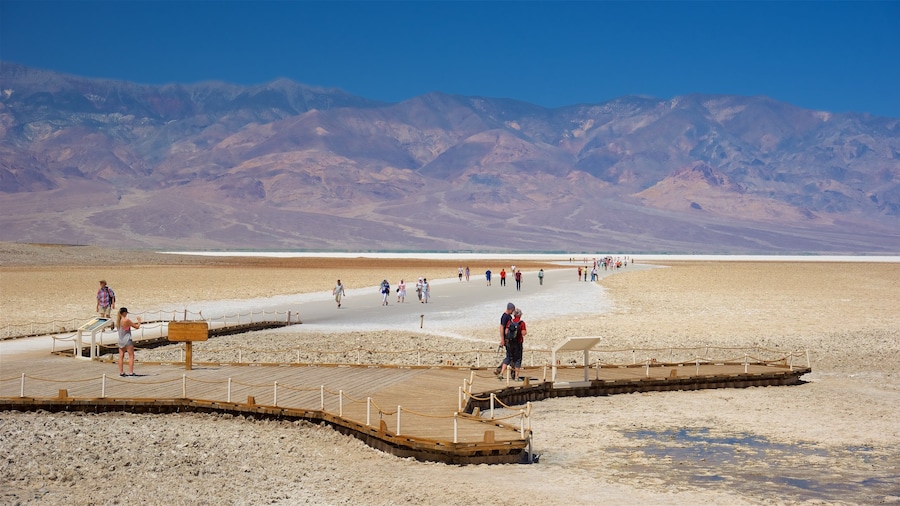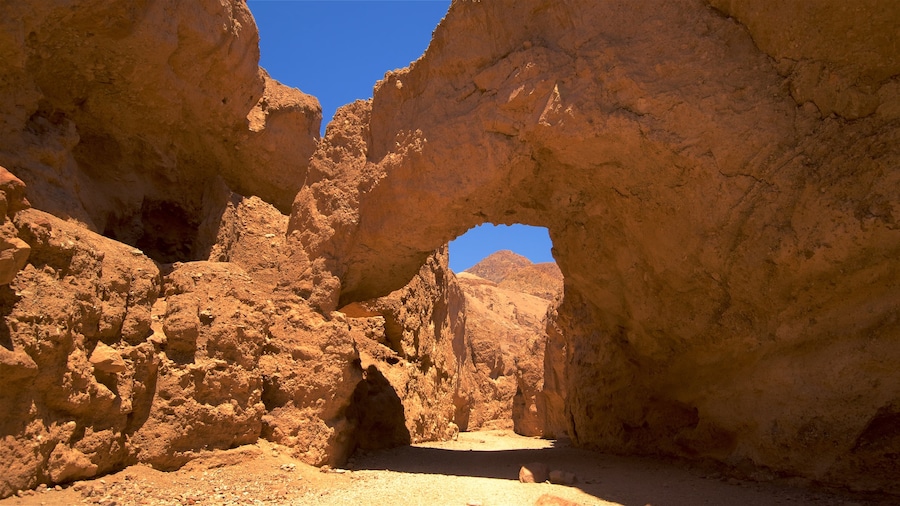Learn the story behind these beehive-shaped stonemasonry structures, which have been beautifully preserved in the Wildrose Canyon since the 1870s.
The Charcoal Kilns are among Death Valley National Park’s most significant historical and archaeological landmarks. Dating back to 1877, these stone-constructed kilns were used to turn lumber into charcoal, which was a valuable resource to the region’s mining operations. Admire the intriguing conical design of these structures, which are believed to be the best surviving examples of their kind in the western states.
As you approach the Charcoal Kilns, you’ll see the structures lined up in tight formation along the roadside. The beehive-shaped kilns are made from local stone and are 25 feet (8 meters) tall. Wander around the site and note the preservation of these eerie-looking structures amid shrubs and bunchgrasses. At an elevation of 6,800 feet (2,100 meters), the Charcoal Kilns offer a bit of respite from the heat of the desert valley below.
The Modock Consolidated Mining Company constructed the kilns in 1877 and used the structures over the following two years. Peer into the small opening at the bottom of each kiln, where lumber from pinyon and juniper trees was heaved in and burned. The resulting charcoal was used to power smelting and ore-extraction operations in the Argus Range.
Look out across the Panamint Mountain range and try to spot the single-leaf pinyon pines and Utah juniper trees that were used to feed the kilns. For exercise and adventure, embark on the hiking trail that leads up to Wildrose Peak. The 8.4-mile (13.5-kilometer) round-trip hike showcases the region’s awe-inspiring scenery. For a less strenuous hike, walk along the trail for 0.25 mile (0.4 kilometer) to reach a rocky viewpoint that overlooks Wildrose Canyon.
The Charcoal Kilns are located within Death Valley National Park and are easily accessible via the road from Stovepipe Wells, which is 37 miles (60 kilometers) away. The kilns are close to two campgrounds, Thorndike and Mahogany Flat. From Mahogany Flat, you can follow the hiking trail to Telescope Peak. There is an admission fee to enter the national park.
